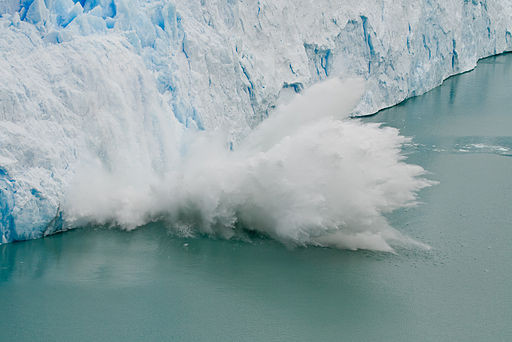
fciwomenswrestling.com article, wikimedia photo
No matter what continent you live on or industry you work in, we are all affected by climate change.
Are you personally concerned about climate change but feel powerless to do something about it?
In record numbers individuals and groups decided to try and effect change by participating in a historic climate change march on Sunday morning, September 21, 2014 in New York City.
The news and information source usatoday.com reported, “More than 300,000 people marched through the streets of New York City on Sunday in what organizers called the largest climate-change demonstration in history.
With banners, flags, floats and drums, protesters at the “People’s Climate March” overwhelmed midtown Manhattan in flocks of vivid color, demanding action ahead of the United Nations Climate Summit this week.
The massive march kicked off at 11:30 a.m. on the ritzy Upper West Side along Central Park before winding its way through the city on a two-mile route. U.N. Secretary-General Ban Ki Moon, former U.S. vice president Al Gore, New York City Mayor Bill de Blasio, and actors Mark Ruffalo and Leonardo DiCaprio joined thousands of protesters at the march.”
The peaceful protest is the first in a number of events held worldwide this week to call attention to the concerns regarding global warming previous to the United Nations summit that was scheduled for Tuesday, September 23, 2014.
President Obama and global leaders from government, finance and business will be at the United Nations to announce initiatives meant to move the world toward limiting global warming.
The USA Today article continues, “The U.N. says 125 nations will be represented. It’s the first time in five years that world leaders have gathered to discuss climate change.
The U.N. summit aims to get world leaders to pledge emission cuts that could become part of a global agreement to be approved at U.N. climate talks next year in Paris.
This year’s Climate Week events follow a series of scientific reports from the Intergovernmental Panel on Climate Change that concludes global warming is “unequivocal” and that it is extremely likely that human activity has been the dominant cause since the mid-20th century.”
The New York Times stated, “The timing of the march was also significant in another regard. Last week, meteorologists at the National Oceanic and Atmospheric Administration announced that this summer — the months of June, July and August — was the hottest on record for the globe, and that 2014 was on track to break the record for the hottest year, set in 2010.
Additionally, nearly 2,700 climate events were planned in more than 150 countries to coincide with the march, considered the centerpiece of the international protest. They ranged from a small rally in Tanzania to major demonstrations from Berlin to Bogata.
No speeches were planned, but the march was to end with a block party on 11th Avenue between 34th and 38th Streets. There, participants could get a closer look at many of the floats and other artwork created for the march, including a 30-foot inflatable life preserver, 100 sunflowers and a model of the New York City skyline with bicyclists powering its lights.”
The respected news source msnbc.com adds, “Whatever happens this week, real UN treaties will have to wait a year. Although attendees of Tuesday’s climate summit will discuss the risks of climate change and some possible remedies, the 2015 Climate Change Conference in Paris, France is where leaders are hoping to stamp out a binding agreement. In the meantime, the organizers of the People’s Climate March are hoping their rally will demonstrate that popular momentum is on the side of the ambitious action.
Participants in the march have been gathering into workshops, icebreakers and other assemblies in New York since the Monday prior to the March. Sympathy actions are expected to take place all over the world, but the main event will begin on the lower west side of Manhattan’s Central park around 11:30 am. Protesters will then proceed down to 11th Avenue and 34th Street.”
For those of us who were not able to join the march, what can we do at home to demonstrate that we too are serious about reducing global warming?
Here are some suggestions from Washington State Department of Ecology.
Drive Less: More than half of our CO2 comes from vehicles, so use public transit, carpool, vanpool, bike, walk, or telework from home if possible.
Weatherproof Your Home: Install storm windows and close curtains at night to reduce heat loss and energy use. Upgrade insulation in walls, basements and attics to save up to 30% of your energy bill.
Change Your Lights: Replace regular light bulbs with compact fluorescent light bulbs to eliminate 150 pounds or more of CO2 for each bulb per year. You also can cut costs, energy use and CO2 emissions by turning out lights when you leave a room.
Cut Hot Water Use: Turn your hot water heater thermostat down to 120 degrees and wrap your hot water heater in insulation. Use low-flow showerheads and wash clothes in cold or warm water. Run the dishwasher and washing machine only with full loads.
Adjust Your Thermostat: Moving your thermostat down just 2 degrees in winter and up 2 degrees in summer could eliminate about 2,000 pounds of CO2 a year by reducing power use. Install a programmable thermostat for best efficiency. Turn the heat down before sleep at night or when leaving the house.
Turn Off Power: Some TV models use more electricity when they’re off than when they’re operating. Plug them and other appliances into a surge protector; switch off the surge protector after you turn off the appliances. When you buy new appliances, look for power-saving Energy Star ratings.
Purchase Green Power from your utility to support clean, renewable electric power. For more efficient, clean energy, consider an energy-efficient furnace, geothermal heat pump, or solar roof top panels.
Plant Trees and Vegetation: Trees absorb CO2 and give off oxygen. One tree will absorb over a ton of carbon dioxide during its lifetime. Trees and bushes make effective wind breaks; they can reduce winter heating costs by 40 percent and summer cooling costs by up to 50 percent. Just three properly placed trees can save homeowners between $100 and $250 a year in heating and cooling costs, according to some estimates.
Recycle and Reuse: Recycle your waste newsprint, cardboard, glass, metal, and recyclable plastic containers. Reuse items instead of discarding them, donate to charity, or sell them on 2 Good to Toss. It takes less energy to make products from recycled goods than from new raw materials.
Shop Smart: Buy products with less packaging and reusable or recyclable packaging. That means less energy is needed to produce packaging such as cardboard, which in turn reduces fewer oxygen-producing trees are cut down.
In your circle of friends and family, have you discussed or debated what can be done about global warming before it’s too late? As the above information shows, the time to act upon it is now.
~ ~ ~
Femcompetitor.com subscribes to fciwomenswrestling.com news source. No affiliation.
Sources: usatoday.com, nytimes.com, csmonitor.com, msnbc.com, ecy.wa.gov, fciwomenswrestling.com, thank you Wikimedia Commons for photos.



